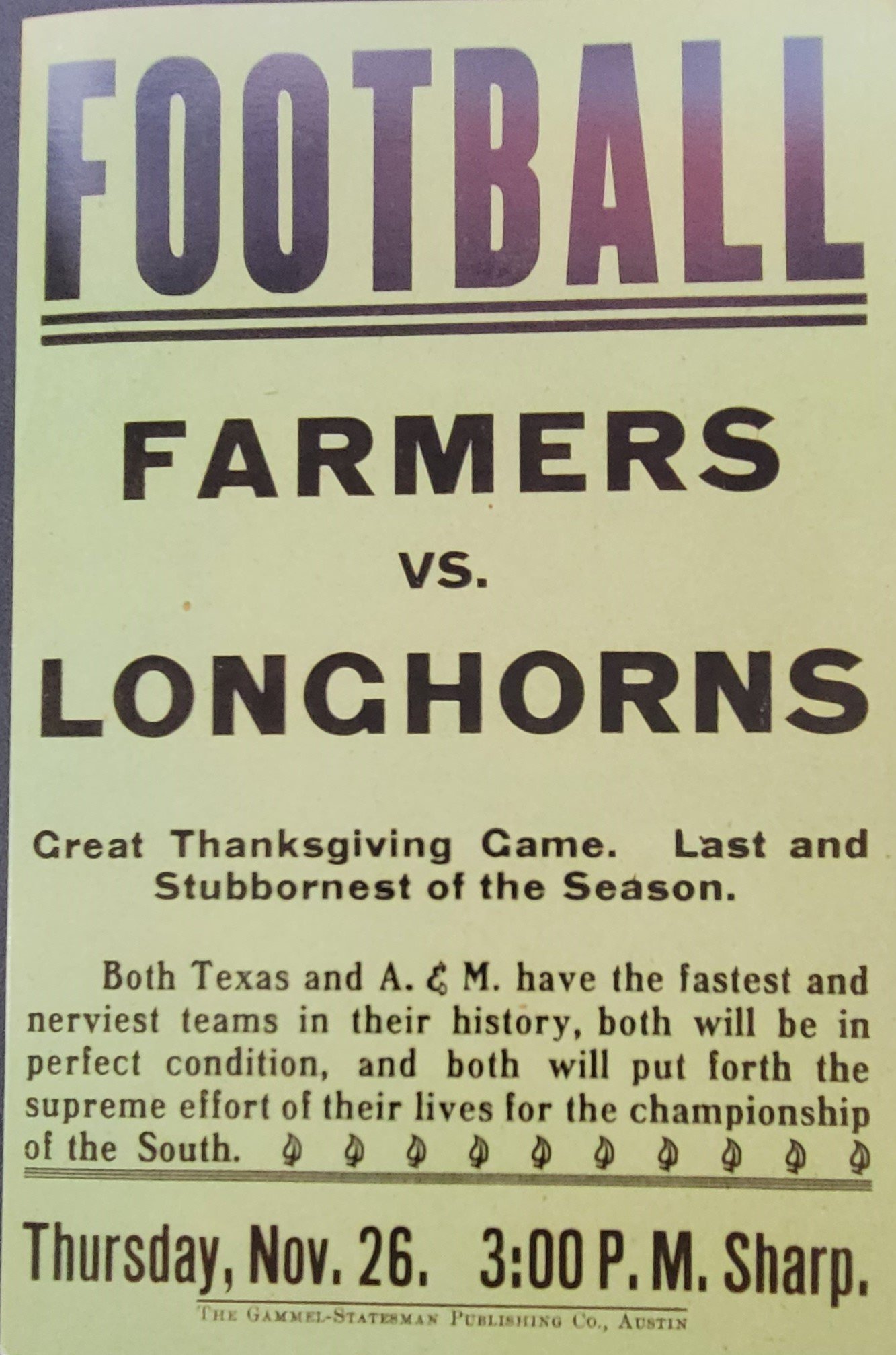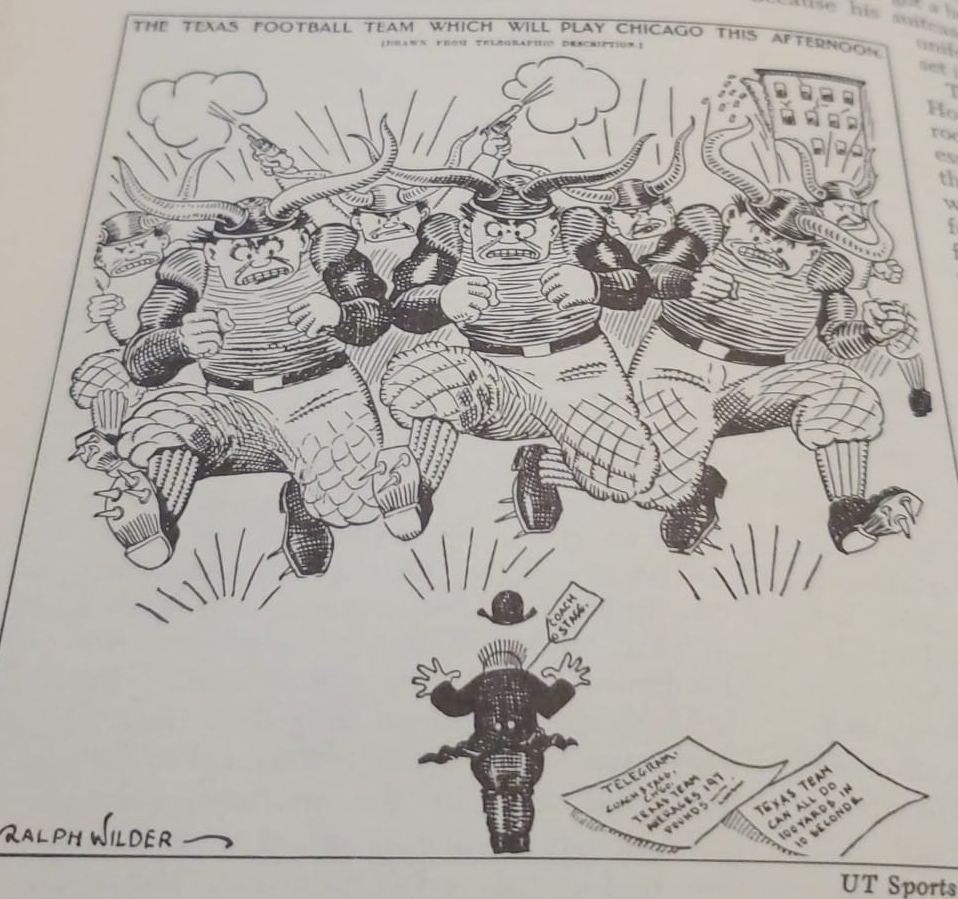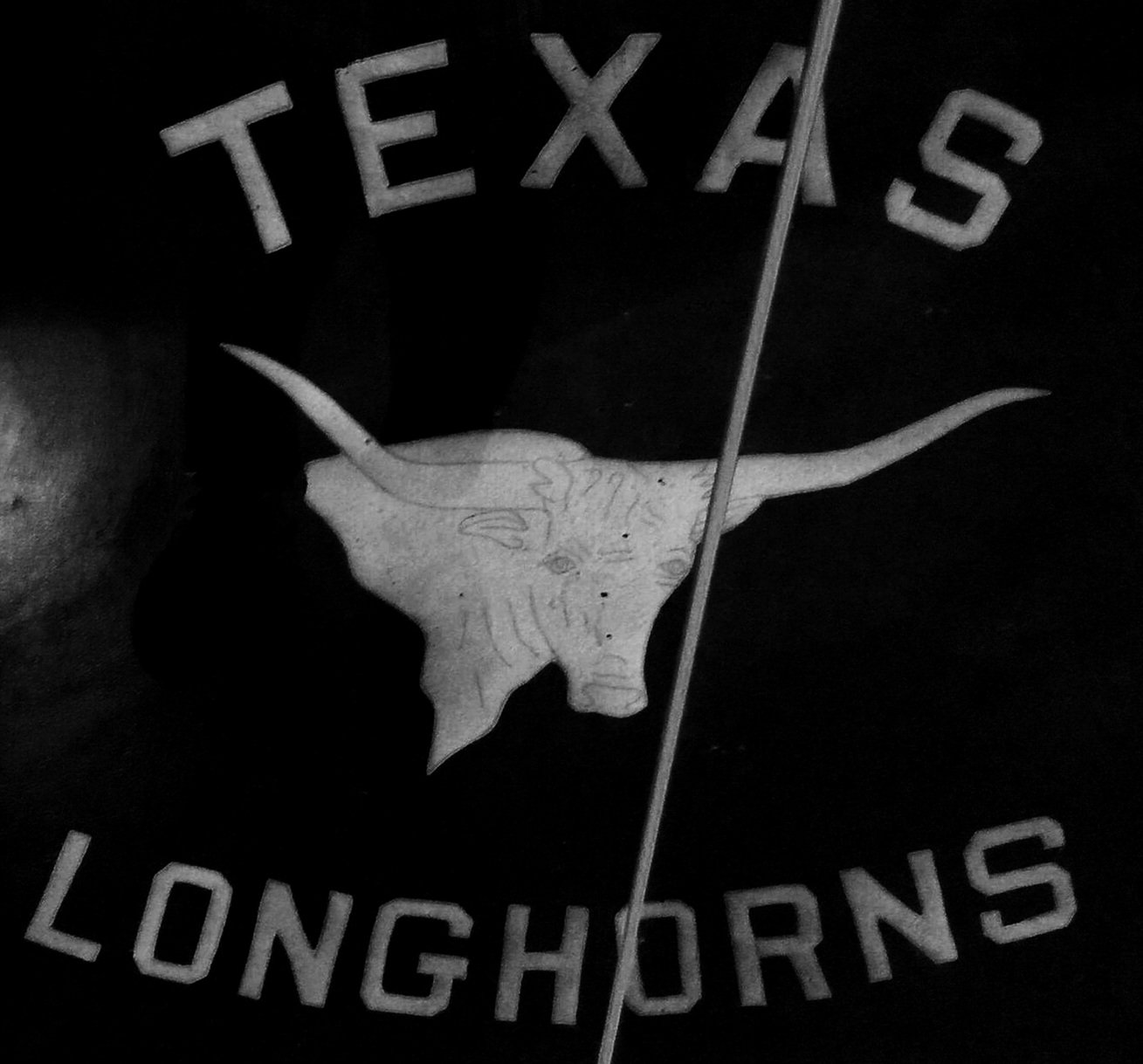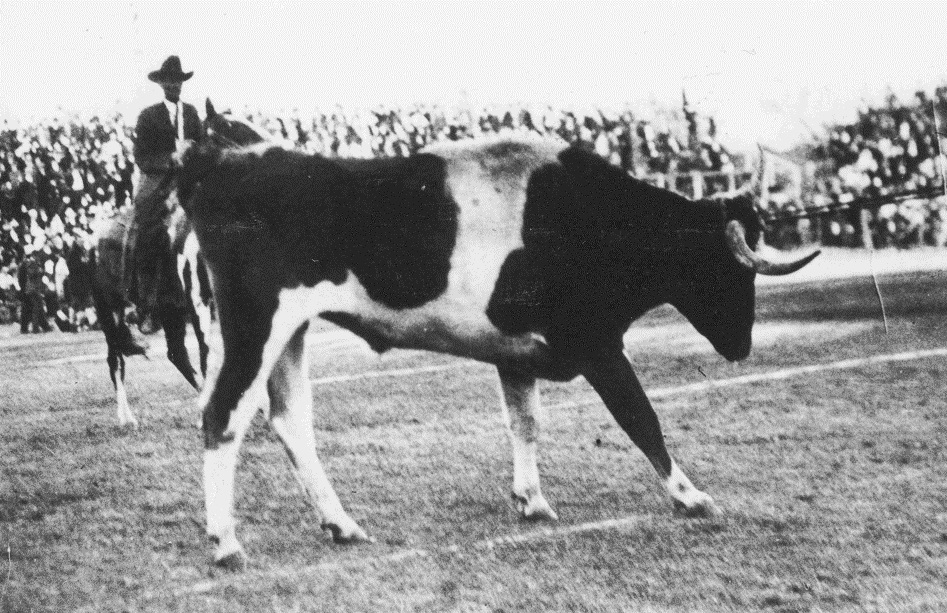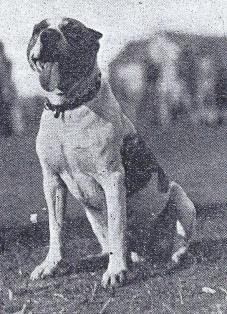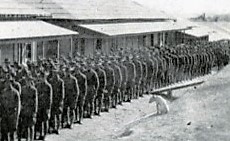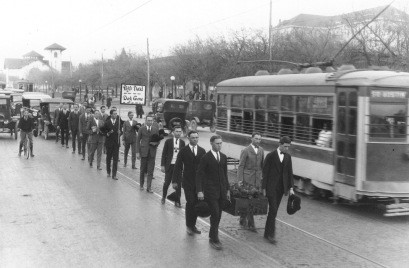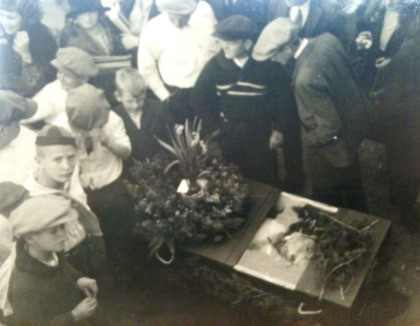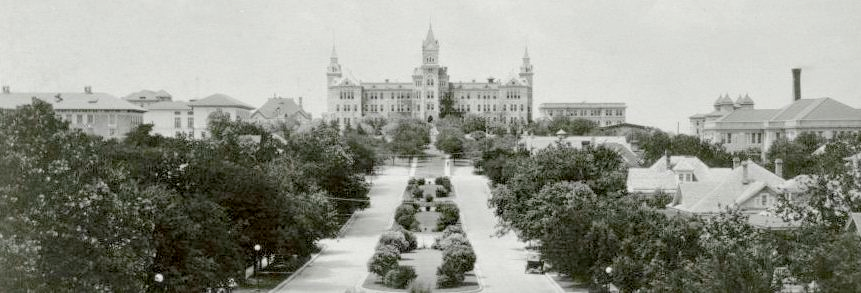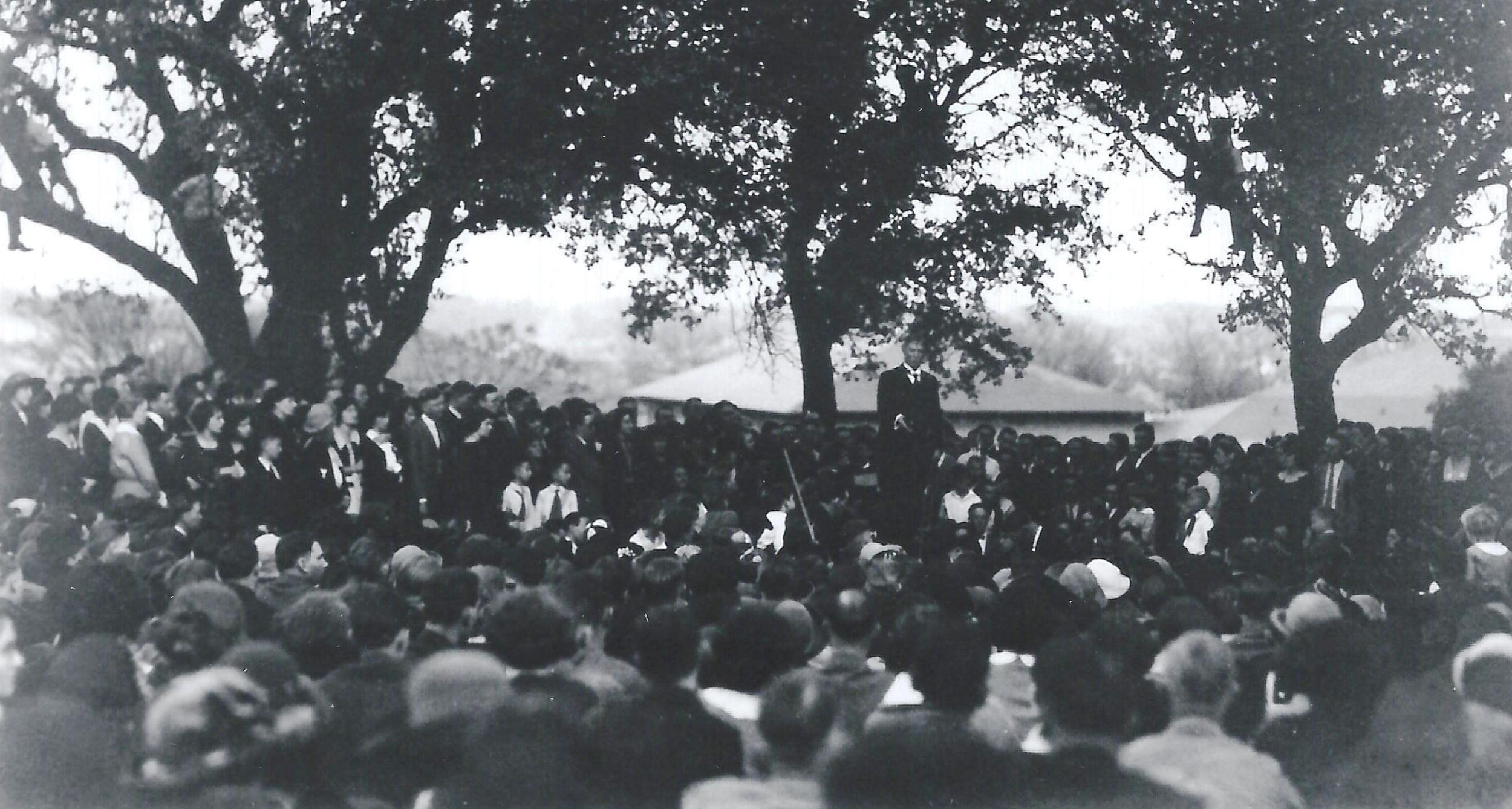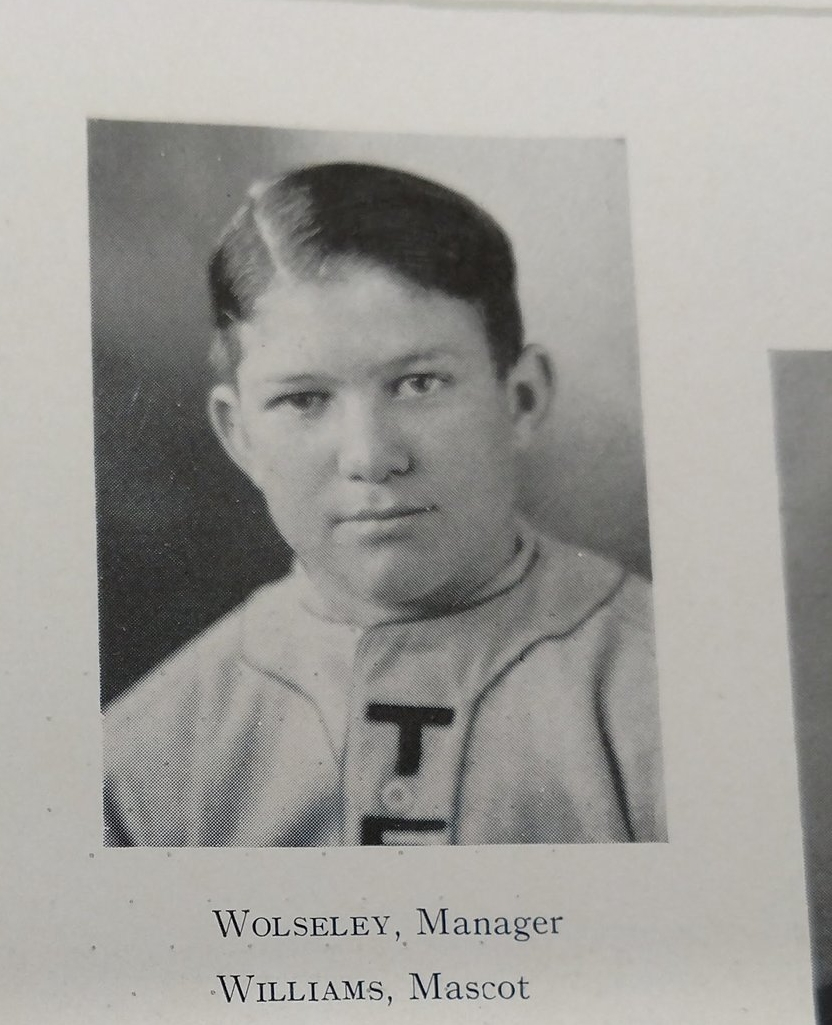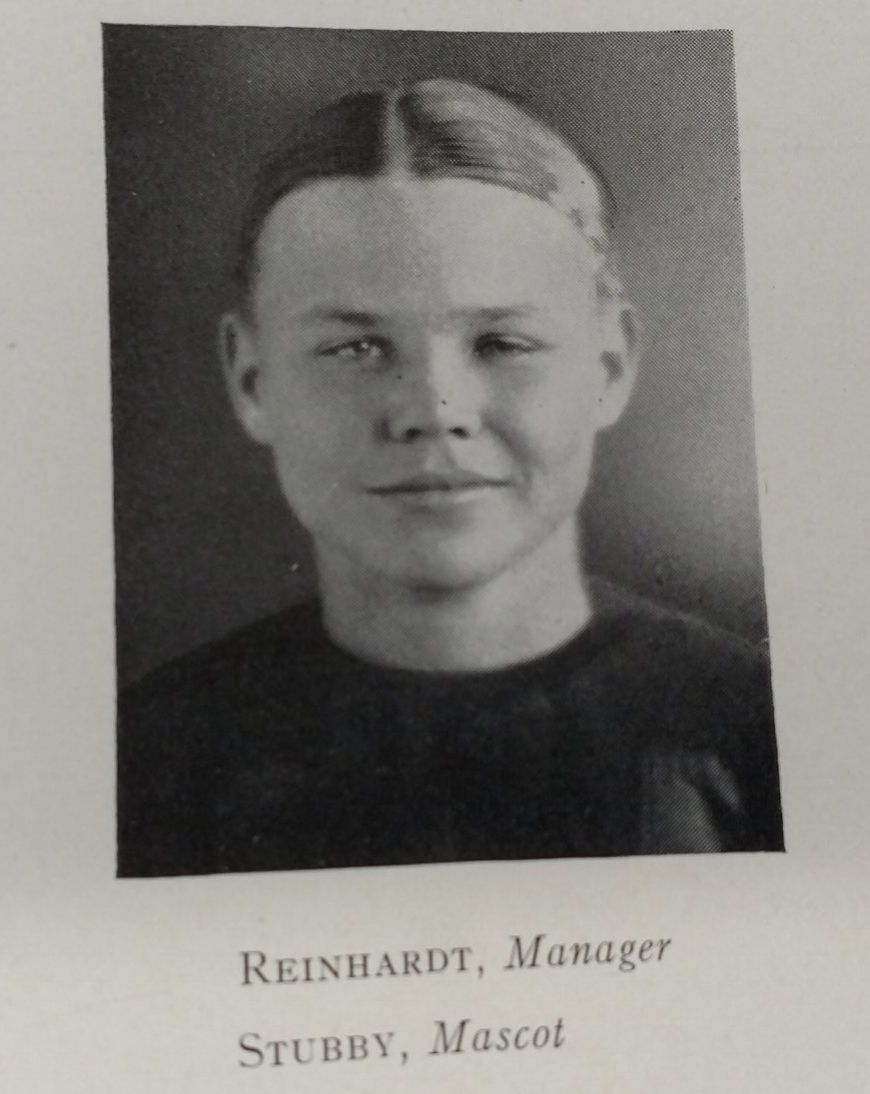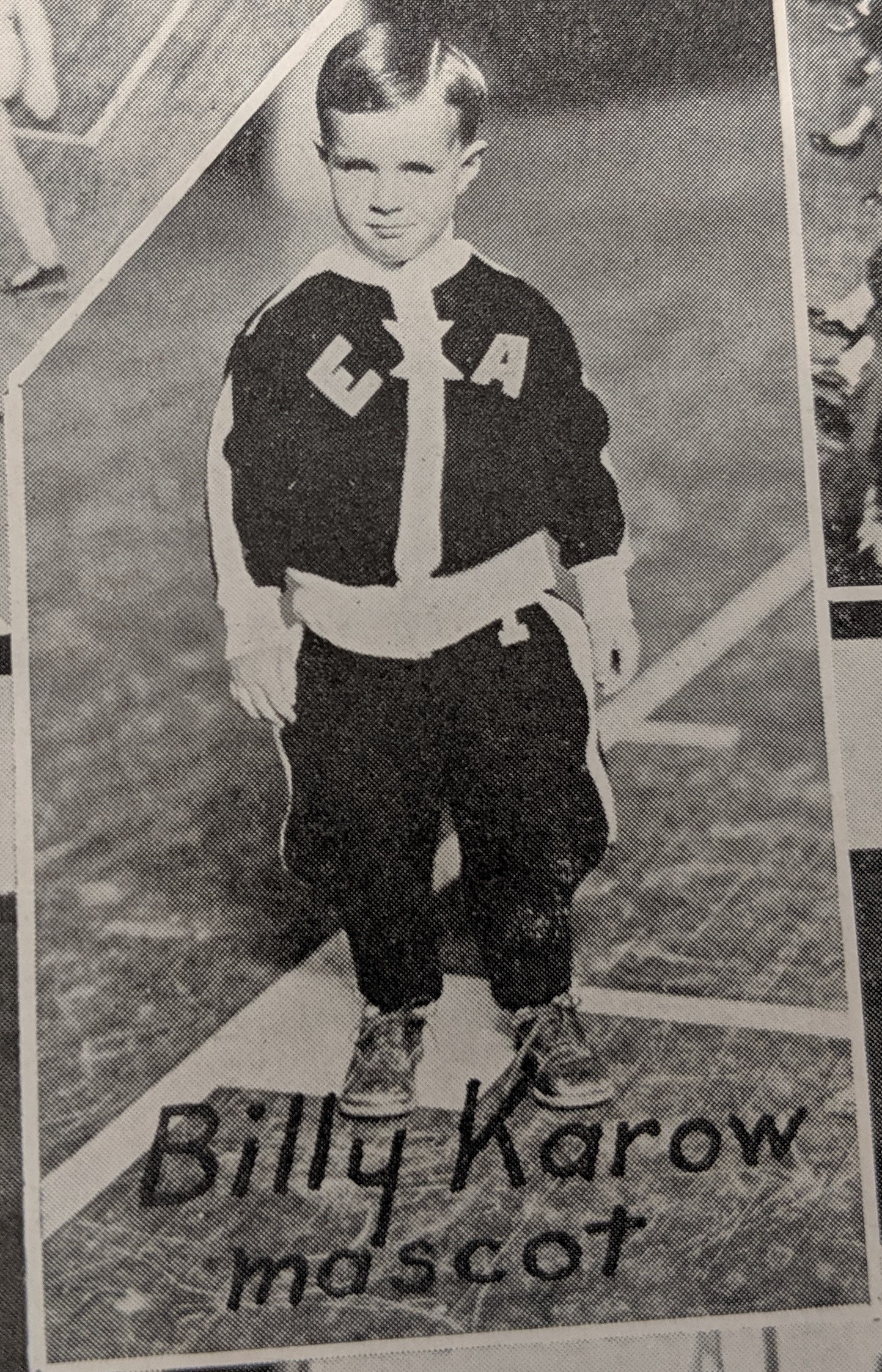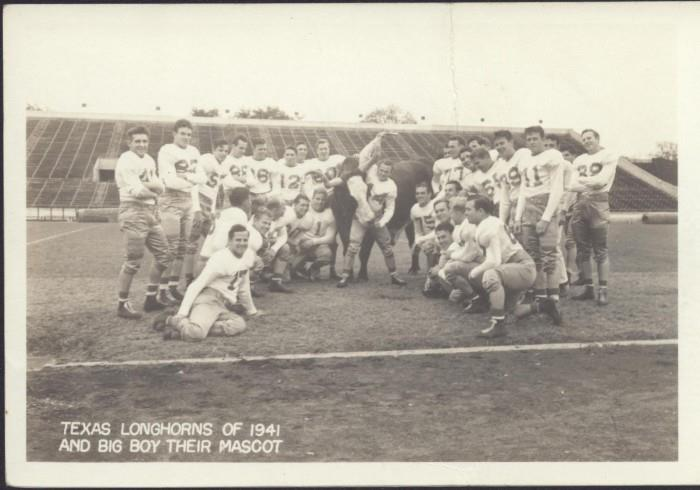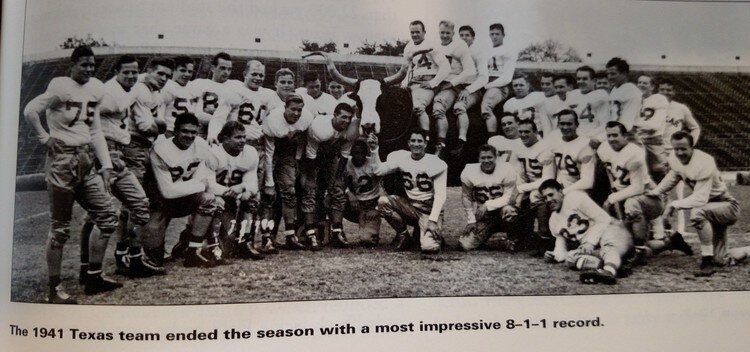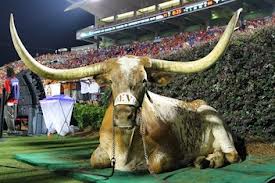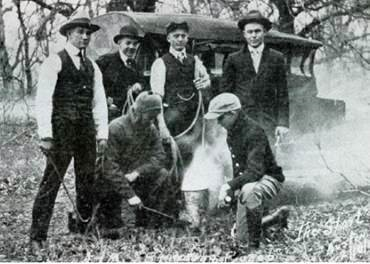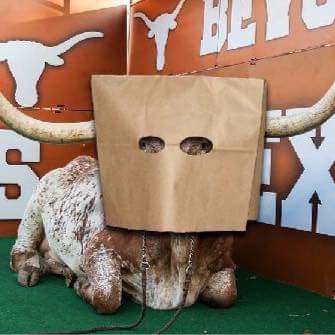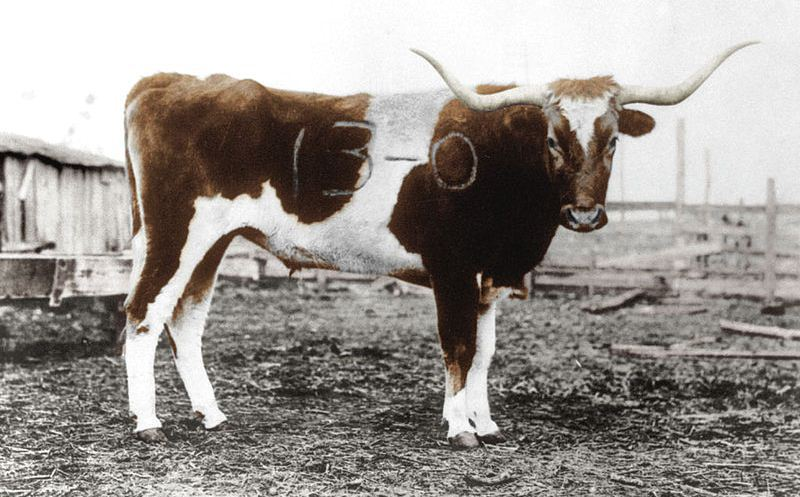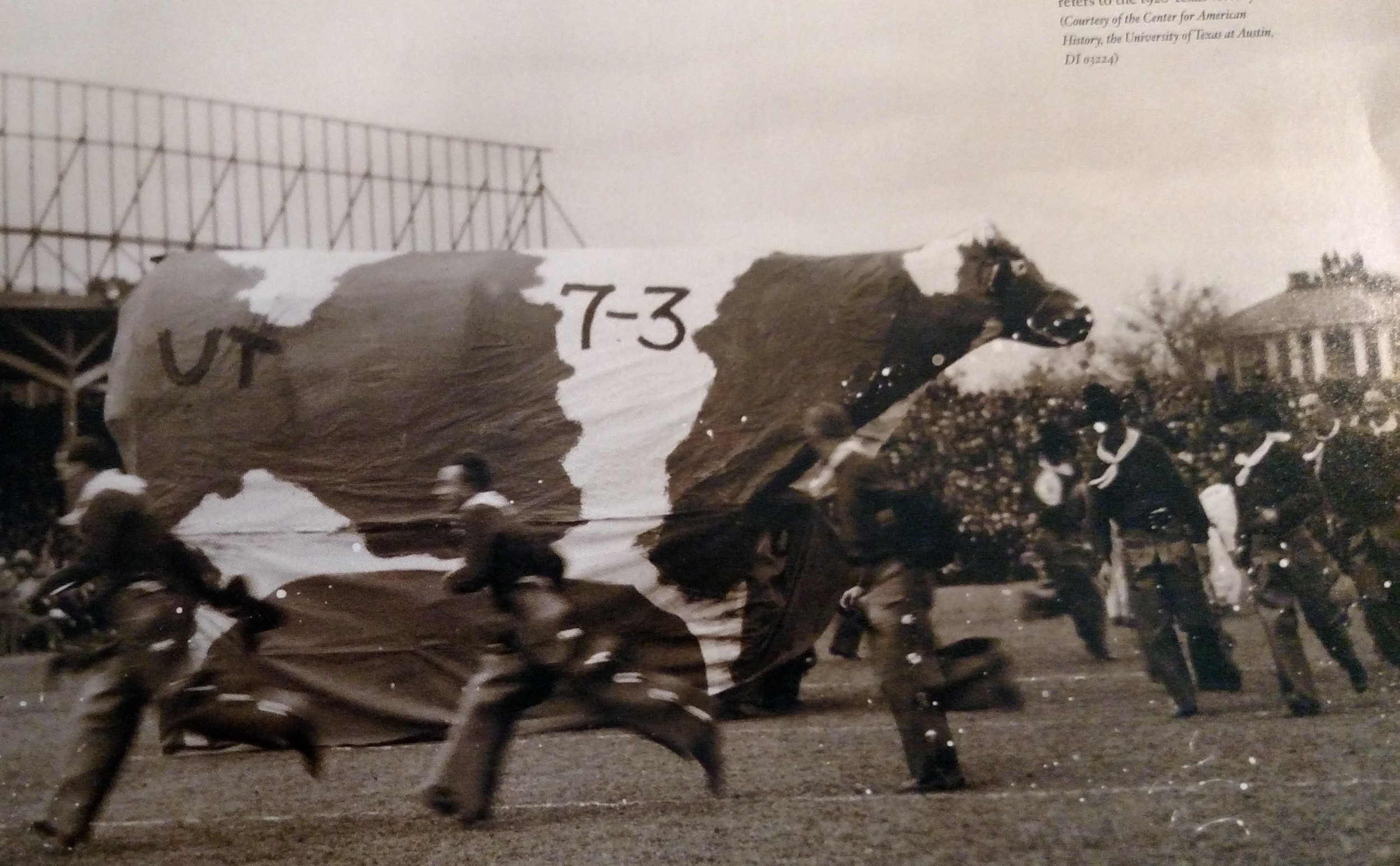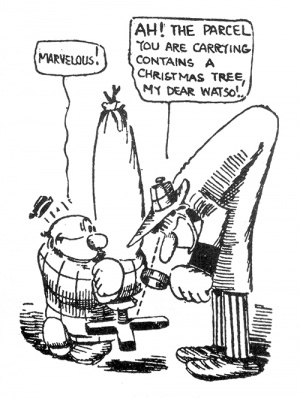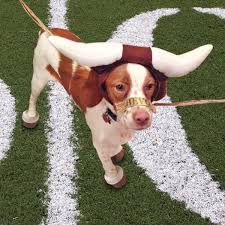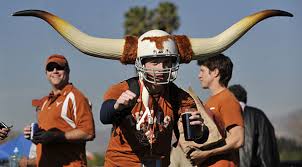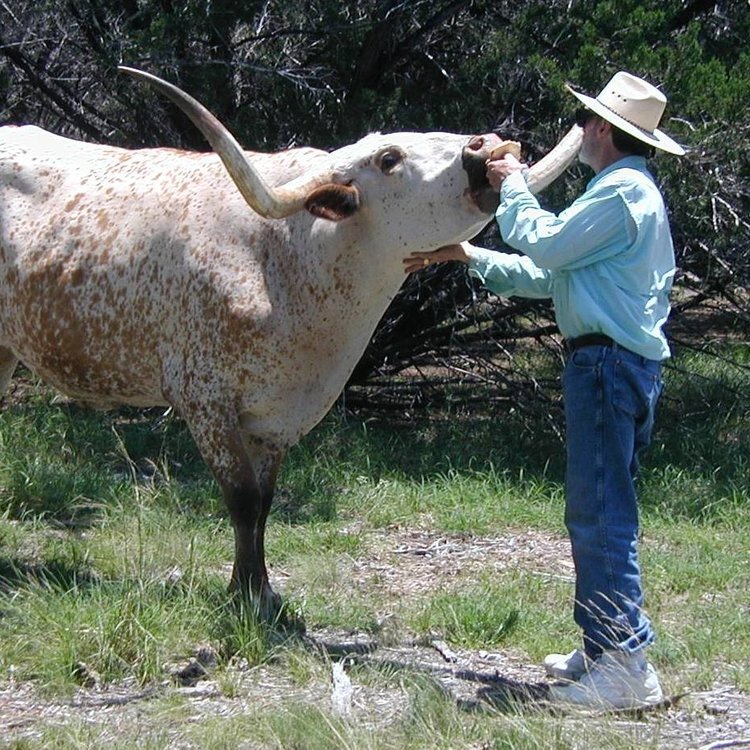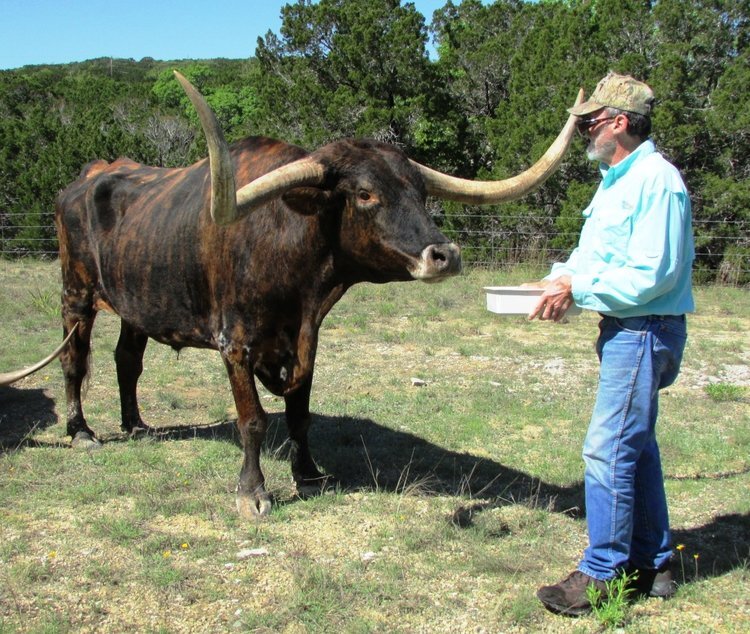The Texas Longhorn made more history than any other breed of cattle the world has known. These wiry, intractable beasts were themselves pioneers in a harsh land, moving elementally with drouth, grass, Arctic blizzards, and burning winds. Their story is the bedrock on which the history of the cow country of America is founded. J. Frank Dobie was a tale spinner who appreciated the proper place of legend and folklore in history. In The Longhorns, he tells of the Spanish conquistadors, who brought their cattle with them; of ranching in the turbulent colonial times; of the cowboy, whose abandon, energy, insolence, and pride epitomized the booming West. He writes of terrifying stampedes, titantic bull fights on the range, ghost steers, and encounters with Indians. A tireless prospector of the history and legends of the Southwest, Dobie spent most of his life preparing to write this book. He was born in the Texas brush country where the Longhorns made their last stand; he back-trailed them into Mexico; he pursued the vivid lore of Texas cowboys and Mexican vaqueros. No historian or naturalist has ever so related an animal to the land, its people, and its history.
The mascot dilemma
The Road to "Bevo" is filled with peaks and valleys and 180 degree turns that elicit Deja Vu moments
1900- In 1900 U.T was known as "Varsity." A shortened version of the word University. There was even a song written celebrating Varsity. Some in the media started referring to the University as Longhorns instead of The Varsity.
1903-
The Daily Texan enters the arena for name-calling. Editor Allex Weisburg and sports writer D.A. Franks started using the Daily Texan newspaper to promote the moniker “Longhorn'“ hoping that the name would gain acceptance with the student body. It did not! However, the first official salvo to establish a University mascot occurred in 1903.
But it did stick in a 1904 Chicago newspaper as the Texas players are depicted wearing horn helmets. Coach Stagg’s team beat Texas 68-0.
A Longhorn, as UT’s mascot, was realistically, symbolically, and figuratively dead until 1913 future regent H.J. Lutcher Stark gave the football team blankets with a 3-dimensional image of a Longhorn.
In 1916 Texas chose Bevo I as the team mascot. Steve Pinckney, a former student manager for the Horns, convinced UT to purchase Bevo I, but he was too MEAN! His introduction was an abject failure.
Bevo I was too mean. He Lasted Thru Half Time Of The Aggie Game Before Being Sent To A Ranch For 4 Years and because his lifestyle was too expensive to keep, he was invited as the guest of honor and main course at a U.T. and A & M banquet. Rumor Has it The Meat Was Tough. Half of Bevo’s hide with the altered Aggie brand was given to Texas A & M. Texas got the head and hung it at Z-hall, a barrack built during WWI. SMU chose to “borrow” the head in 1928, but it was eventually found in a rooming house in Dallas and was returned to Texas. Bevo’s head then found a home at Gregory Gym until 1943 when Aggies removed Bevo I’s horns. Bevo I, as the mascot, was realistically, symbolically, and figuratively dead for the foreseeable future.
T.B. Buffinton who presented Bevo I said “As the great Longhorn was free to roam the wilderness of Texas , so must the University be free to roam the world of sports unhampered and unafraid
"Pig" the Dog is the University of Texas First Mascot
So, in 1917 "Pig," a dog, is crowned U.T. mascot. Pig is so popular the U.T. athletic department grants Pig a varsity letter in the form of a "T" attached to his collar. He is named after Gus “Pig” Dittmar the bowlegged captain of the football team.
After the demise of Pig, U.T. sports struggled to find a new mascot. For a decade, young boys supplied the answer. Boys were selected and celebrated as the mascot in team photos. Their names, such as Runt and Stubby, certainly would not pass the politically correct name test in 2020, but that is another story.
During WWI the cadets adopted Pig as their mascot, included him in their graduation photos, and he twice took the train ride to Dallas, where the cadets were sent for initial flight training before returning to Austin.
In 1917, when the United States entered the First World War, Pig enlisted. The war transformed the Texas campus overnight, as the University sponsored three military schools on its grounds. The largest was School of Military Aeronautics. A precursor of the Air Force Academy, the SMA was created to provide basic technical instruction for beginning pilots before they moved on to flight training.
Housed in the buildings on the “Little Campus,” just north of the present day Erwin Center (only John Hargis Hall and the Nowotny Building remain), several hundred soldiers at a time arrived for six-week sessions. Pig joined them. If a long hike was part of the day’s activities, Pig was usually near the front. He kept an eye on the barracks while the cadets were in class, and faithfully attended inspection each evening. When he had time, Pig wandered back to the main campus to check in on UT students, most of whom were part of the Student Army Training Corps.
Of course, Pig was a regular at home and most out-of-town athletic events. He paced the sidelines for football and baseball games, and ventured indoors to the gym for basketball season. Pig eagerly lent his voice to the support of UT squads and developed a profound dislike for anything related to rival Texas A&M. “If you say ‘A&M’ to him, he will promptly lie down as though ready to give up the ghost in disgust,” related one account. “On the other hand, say ‘Texas’ to him and he starts barking with joy.” He was inducted as the only canine member of the newly established “T” Association.
On New Year's Day 1923 Pig was hit by a car at Guadalupe and 24th and died four days later. The newly formed Cowboy organization carried Pig’s casket to the burial site and Pig received the status of a dignitary with Pig’s eulogy delivered by the dean of the engineering school-Thomas Taylor. Dean Taylor said “Let no spirit of levity dominate this occasion,” “A landmark has passed away.”
The January 5th 1923 Austin Statesman Head line states
"Gloom Pervades University Campus: Students and Faculty Mourn Death of Mascot; To be Buried with Honors. "
Pig is laid in state in front of the Co-op and more than a thousand mourners file pass to pay respects. At 5 P.M. there is a funeral procession led by the Longhorn Band and the "Cowboys" as pallbearers.
The Longhorn Band plays “Taps” as Pig is buried, and then "Taps" is played again from the old Main Building.
Young boys were the mascots in the late 20's - Longhorn mascots do not return until 1936.
After the demise of Pig the sports teams struggled to find a new mascot. Young boys were the answer. These boys attended the games with the players and were pictured in the Cactus team photograph. Their names, such as Runt and Stubby, certainly would not pass the politically correct name test in 2022, but that is another story.
· 1923-1935 Texas Uses Young Boys As The Mascot. There is no Longhorn named Bevo. However Lutcher Stark continued to Believe That The Longhorn Was The UT Brand Of The Future And In 1920 He Donated A Plaque With A Longhorn In Relief To Honor UT Alumni Who Died Fighting In WWI.
· 1936- Bevo II Is No Better Than Bevo I.
In 1936 U.T. leadership, in a Deja Vu moment introduced Bevo II. He Only Makes 4 Appearances Before The UT Administration Decides He Is Too Dangerous So He Is Sent Home To The Diamond T Ranch To Live A Full Life. And oops he was a Hereford anyhow. He was not invited to the banquet table.
From 1937-1944 Texas did not officially have a mascot, but the football team of 1941 unofficially chose a Longhorn named "Big Boy" as their mascot. (Photo below).
· 1945-1948- In 1945 Bevo III was introduced to Texas students. He was not a great mascot, but he was better than his predecessors. That is until 1948 when Bevo III charged a newspaper photographer who had come "a courtin." Bevo III was returned to the San Antonio zoo to live a full life.
· 1949- Bevo IV Is The Meanest Bevo Of All . After Ramming A Car He Is Returned To Fort Griffin State Historic Site.
· 1950-1955- Bevo V “Little Gentleman” Is Raised From Calfhood By The Silver Spurs And This Strategy Works. He Is The First Bevo To Travel To Away Games and cooperated in pep rallies and parades.
The whole story of U.T. mascots, and highlights of all the Bevo personalities follows.
· 1955-1957- Bevo VI was initially credited with being good natured until he Charges The Rice Bench And subsequently "Released" From His Responsibilities”.
· 1957-1965- Bevo VII Reigns During The Start Of The Royal Era And Is The Most Docile Bevo To This Date In History. He Is Kidnapped In 1963 And The Texas Rangers Are Used In The Search For Bevo VII. He Is Found In Bryan Texas At An Aggie Veterinary Clinic Undergoing A Thorough Exam. Bevo VII Is Responsible For The First "Official" Texas Longhorns National Championship.
· 1965- Bevo VIII Was Too Feisty And Released From His Duties And Responsibilities.
· 1966-1976- Bevo IX Is Great The Only Thing That Upsets Him Is Women. He Is Kidnapped Two Times In 1972- Once By The Rice Owls And Once By The Aggies. He Is Responsible For Two football National Championship Teams.
· 1976-1980 - Bevo X Hated The Smell Of Perfume And The Color Red. He made the Sooners and Razorbacks very nervous.
· 1981 - Bevo XI Is Selected As An Interim Bevo While A New Bevo Is Trained.
· 1982-1988 - Bevo XII Is Unpredictable And Is Never The Same After His Trailer Flips On MoPac.
· 1988-2004- Bevo XIII Is Called The "Gentleman Bevo" By The Daily Texan And Is The First Bevo That Does Charity Work For Sick Kids And Attends George Bush Inaugural Ball In 2001. He Is Most Famous For Relieving Himself On The Nebraska Cornhuskers Logo In The Big 12 Title Game.
· 2004-2015 - Bevo XIV Has The Longest Reign Of All The Bevo's. He Is A Gentle Spirit And Affectionate. He Is Even Polite To The Aggie Mascot During "Reveille's" Visit To Bevo's Home. Bevo XIV Even Rolls On His Side For Tummy Rubs When His Owner Betty Baker Enters His Stall.
The origin of the name Bevo will never be known, but there are three speculations on the origin. You get to choose the one you like.
All three are presented in this article by Jim Nicar ( the images are added by Billy Dale)
.
The last day of November, 1916 - Thanksgiving Day - was an eventful one for the University of Texas. At 9:00 A.M. a procession of students, faculty and alumni paraded south from the campus to the state capitol for inauguration of Robert Vinson as the new UT president. Held in the House Chambers, students dressed according to their college and class. Seniors wore special arm bands, engineers sported blue shirts and khaki trousers, and freshmen huddled in green caps. There was enough pomp and oratory for the ceremony to last all morning.
After the inauguration, lunch was served on the Forty Acres. A boxed meal for twenty-five cents was available for those who wanted to picnic on the campus. Folks who preferred a more traditional Thanksgiving Day feast headed for the "Caf," an unpainted, leaky wooden shack that somehow managed to function as the University Cafeteria. The full turkey dinner cost fifty cents.
The afternoon was reserved for the annual football bout with the A & M College of Texas. A record 15,000 fans packed the wooden bleachers at Clark Field, the University's first athletic field, where Taylor Hall and the ACES Building are now. The first two quarters were a defensive struggle, and the half ended with the score tied 7 - 7.
During halftime, two West Texas cowboys dragged a half-starved and frightened longhorn steer onto the field, where it was formally presented to the UT student body by a group of Texas Exes. They were led by Stephen Pinckney (LL.B. 1911), who had long wanted to acquire a real longhorn as a living mascot for the University. While working for the U. S. Attorney General's office, he'd spent most of the year in West Texas assisting with raids on cattle rustlers. A raid near Laredo in late September turned up a steer whose fur was so orange Pinckney knew he'd found his mascot. With $1.00 contributions from 124 fellow alumni, Pinckney purchased the animal and arranged for its transportation to the University campus. Loaded onto a boxcar without food or water, the steer arrived at the Austin train station just in time for the football game.
After presenting the longhorn to the students, the animal was removed to a South Austin stockyard for a formal photograph and a long overdue meal. The steer, though, wasn't very cooperative. It stood still just long enough for a flash photograph, and then charged the camera. The photographer scurried out of the corral just in time, and both the camera and photograph survived the ordeal.
In the meantime, the Texas football team ran two punts in for scores to win the game 21 - 7.
To spread the news, the December 1916 issue of the Texas Exes Alcalde magazine was rushed into press. Editor Ben Dyer (BA 1910) gave a full account of the game and halftime proceedings. About the longhorn, Dyer stated simply, "His name is Bevo. Long may he reign!"
With the football season over, the steer remained in South Austin while UT students discussed what to do with him. The Texan newspaper favored branding the longhorn with a large "T" on one side and "21 - 7" on the other as a permanent reminder of the Texas victory. Others were opposed, citing animal cruelty, and wondered if the steer might be tamed so that it could roam and graze on the Forty Acres.
The debate was abruptly settled early on Sunday morning, February 12, 1917. A group of four Texas A & M students equipped "with all the utensils for steer branding" broke into the South Austin stockyard at 3:00 am. There was a struggle, but the Aggies were able to brand the longhorn "13 - 0," which was the score of the 1915 football game A & M had won in College Station.
Only a week later, amid rumors that the Aggies planned to kidnap the animal outright, the longhorn was removed to a ranch sixty miles west of Austin. Within two months, the United States entered World War I, and the University community turned its attention to the conflict in Europe.
Out of sight and away from Austin, the branded steer was all but forgotten until the end of the war in November 1919. Since food and care for the animal was costing the University fifty cents a day, and because the steer wasn't believed to be tame enough to roam the campus or remain in the football stadium, it was fattened up and became the barbecued main course for the January 1920 football banquet. The Aggies were invited to attend, served the side they had branded, and were presented with the hide, which still read "13 - 0."
Ragan Gennusa is well known for his Texas Longhorn paintings and has owned longhorn cattle since 1984. Because of their historical contribution to the state of Texas, Ragan Loves Longhorn's historic gift to the state of Texas. He has chosen to honor this incredible animal in art. He understands that Longhorns were selected as the team mascot because they embody the character and spirit of the University of Texas and the people of Texas.
Today, Ragan has passed away but his legacy lives on. His home was in the hill country outside of Dripping Springs, Texas, in a house he built. Painting was his profession and his specialty celebrated Longhorns and the old west.
Ragan’s story is at https://texas-lsn.squarespace.com/ragan-gennusa


